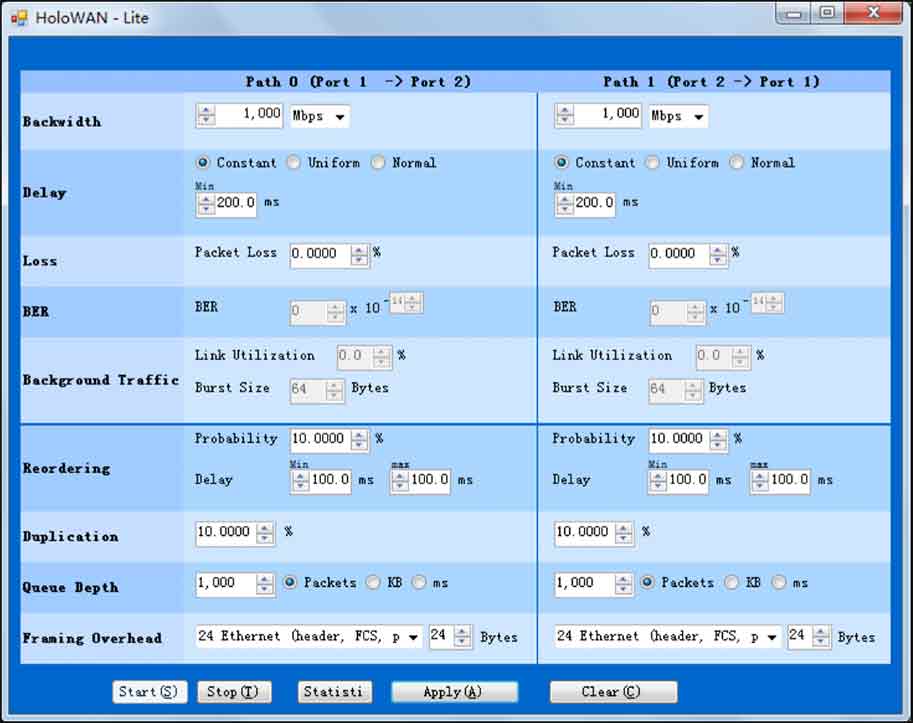HoloWAN History
Since 2009
Continuous evolution leads to becoming stronger.
Easily simulate complex networks and help you create perfect products.


Zergling, the predecessor of HoloWAN
In 2008, Maisiyuan Information Technology was officially established in Shenzhen, China.
In the same year, we developed our first Ethernet tester, Zergling.
Its name originated from the Zergling unit in the popular real-time strategy game "StarCraft", symbolizing its compact size, flexible use, and powerful performance.
Our first batch of users, such as Sangfor Technologies, must have a fresh memory of it!
The development and manufacturing of Zergling allowed the HoloWAN team to accumulate rich experience in Ethernet tester development, laying a solid foundation for HoloWAN's decade-long journey as a Chinese independent brand!

In 2010, the second generation of HoloWAN was launched.
Due to our technological experience in the field of data communication testing and the rise of three-network convergence and real-time network applications, the first generation of HoloWAN network impairment simulator was launched in 2010.
Although the first generation of HoloWAN was young, it quickly gained customer recognition with its absolute cost-effectiveness.
It accurately simulated basic network impairments such as bandwidth, delay, packet loss, and reordering, and solved the network adaptability testing needs of some VOIP and network video applications.

In 2013, the first generation of HoloWAN was launched.
After three years of hard work, the second generation of HoloWAN was launched as scheduled in 2013.
It introduced hardware models of 100Mbps, 1000Mbps, and 10GE, and also launched the HoloWAN pro software.
In addition to the improvements in accuracy and reliability, the second generation of HoloWAN also brought powerful features such as packet filtering, a variety of network jitter types, and network environment recording and playback.

In 2015, the third generation of HoloWAN was launched.
The third generation of HoloWAN adopted a brand new hardware design, with a plug-in card hardware structure that is compatible with both electrical and optical ports, as well as gigabit and 10 gigabit speeds on a single hardware device.
In terms of software, the third generation of HoloWAN optimized the queue control algorithm, added advanced features such as modifying packets, and added support for GRE tunneling protocol.
In 2015, HoloWAN gained recognition and purchases from representative users such as China Electric Power Research Institute, Huawei Chengdu Research Institute, China Academy of Telecommunications Research, Institute of Computing Technology of the Chinese Academy of Sciences, Institute of Electronics of the Chinese Academy of Sciences, and China Mobile Southern Base.
In 2018, the first generation of HoloWAN Pixel was launched.
In 2016, HoloWAN provided the "Pixel" feature, which includes packet capture analysis and network impairment transparency, to some testing users.
HoloWAN challenged American brands with this major innovation. Pixel is our redefinition of the network emulator.
We not only allow it to simulate network environments but also network troubleshooting.
In 2018, Pixel officially met with users. HoloWAN redefined the network impairment simulator.
In 2018, Pixel officially met with users. HoloWAN redefined the network impairment simulator. HoloWAN repeatedly challenged American brands, overcame difficulties time and time again, and became an outstanding representative of China's scientific research strength in the field of network emulator.

In 2020, the Recorder & Playback feature was launched.
In 2020, HoloWAN launched the Recorder & Playback feature, which allows users to easily record specific network environments using the HoloWAN Recorder software and replay the network environments using the HoloWAN Playback feature to more accurately reproduce special network conditions.

In 2021, the HoloWAN Recorder Pro network scenario collection tool was launched.
In 2021, HoloWAN launched the HoloWAN Recorder Pro network scenario recording software, which can record the changes in network bandwidth, delay, and packet loss of specific networks over a period of time and generate test results with a granularity of 0.1 seconds. The test results generated by HoloWAN Recorder can be imported into HoloWAN for network scenario playback.

In 2022, HoloWAN chip development network impairment suite was launched.
In 2022, HoloWAN launched targeted network impairment solutions for a number of network chip development companies. Based on this solution, the HoloWAN team can respond more quickly to the latest needs in chip development and provide rapid secondary development services.

In 2023, brand new cross platform HoloWAN Recorder was launched.
In 2023, HoloWAN launched a brand new cross-platform HoloWAN Recorder. The new version of Recorder supports Android, Windows, and Linux systems, with remote control capability and support for multi-platform testing. The new Recorder lays a solid foundation for the data-driven and intelligent development of HoloWAN. HoloWAN is about to embark on a new era of intelligence.

